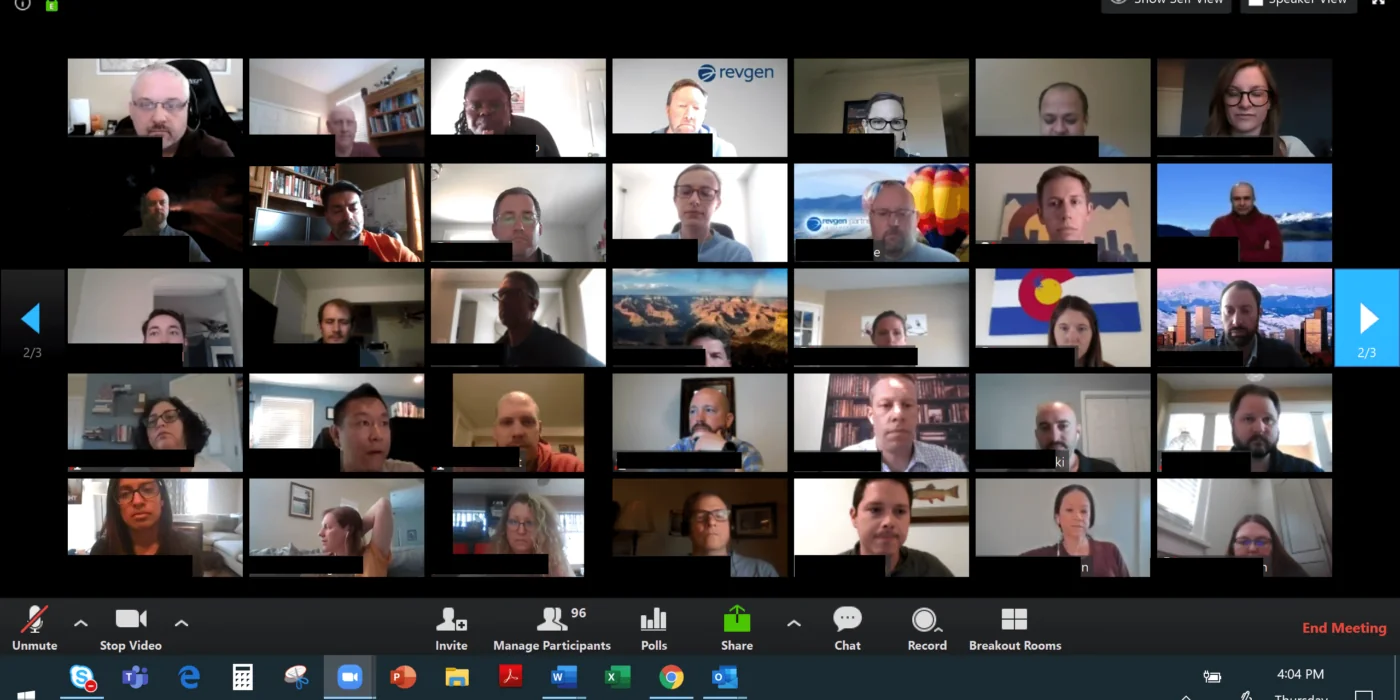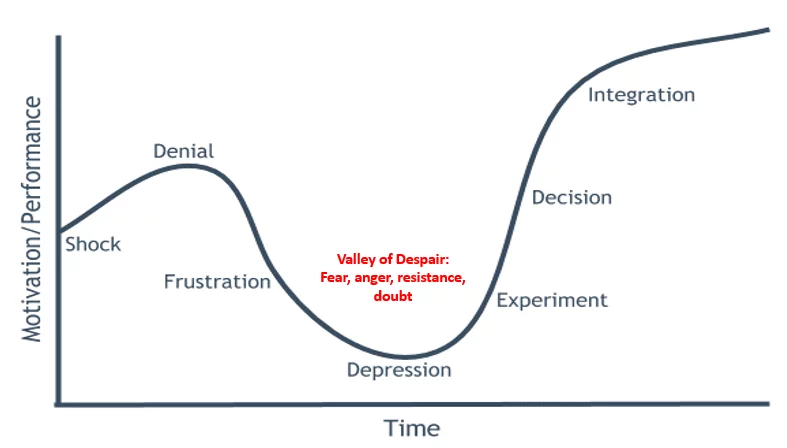It’s Official: RevGen is a Great Place to Work
For our second year, RevGen has been certified as a "Great Place to Work"
Read More About It’s Official: RevGen is a Great Place to Work
Tips to navigate the change curve: personally and professionally

Author: Lauren Croucher
Everyone is familiar with change management; even if you don’t know you are. It’s likely you’ve heard of the change curve, or the five stages of grief developed by Elisabeth Kübler-Ross in 1969. We’ve since learned that people experience the change curve for lots of reasons, both big and small. As we navigate uncertainty and personal transition, we go through different stages of the change curve. Oftentimes, when we are at a low point, we may find ourselves at the bottom of this curve, which is often referred to as the “Valley of Despair”.

You may have experienced the change curve after a small change, for example when I had to update Spotify on my phone. There were minor changes to the user interface, and I couldn’t find my regular playlists. I threw my phone on the couch in frustration and avoided it until I was ready to jump in and experiment with the change.
We also go through the change curve when we encounter bigger changes. For example, suddenly working from home, adjusting to a new job, the death of a loved one, or facing fears about our personal health and safety. As a result of those bigger changes and personal transitions, we are more likely to get stuck in the Valley — the lowest point in the stages of the change curve. Because the change curve isn’t a linear process, we often start to crawl out of the Valley, only to sink back down into it – over and over again.
The point of change and crisis management is not to eliminate the changes or ignore them, but rather to reduce disruption time and scope: the depth and amount of time spent in the Valley of Despair.
We can apply change management tactics at both personal and professional levels to help reduce the amount and depth of despair.
At work, the most important step is to communicate – even if you don’t have all the answers. If leadership teams don’t strive to be transparent with their employees, their employees will start to make assumptions about the situation – this is what we do as humans.
Immediately after the COVID-19 pandemic caused RevGen to close the office and direct everyone to work at home, our senior leadership instituted weekly video calls for our staff of 100 people. As staff members, we were given the opportunity to submit anonymous questions prior to those video calls. Our leadership then addressed each one, even if the answer was “we just don’t know yet”.
Other key communication strategies and leadership crisis management tactics include:
Talk with your people regularly, they don’t expect you to have all the answers, they just want to hear from you. Any communication is better than no communication and is a huge aspect of what defines effective managers.
It is important to also communicate with yourself in times of crisis.
What are some change and crisis management techniques?
We fall into the Valley of Despair because that’s what change does to us – it disrupts our “normal” and we suddenly have to find a new way to behave. The point of the change curve is to understand that all of these reactions are normal. You can identify where you are in the stages of the curve and use change management tactics to attempt to move up and out of the curve – until the next change comes.
What change management tips and tricks will you use with yourself, your employees, your leaders, and your friends? For myself, I’ve been holding daily “staff meetings” with to explore where I am on the curve that day and then try new things to help me adapt and accept the changes that have occurred in the last month.
Change will keep happening, but we don’t have to get stuck in a valley because of it. Check out our services page to learn more about other ways we can help you elevate your business and reduce disruption time.
Lauren Croucher is a strategy and management consultant, specializing in strategy, process improvement, and change management. Lauren holds a Master of Business Administration degree in Strategic Management, a black belt certification in Lean, and a Prosci certification in Change Management.
Get the latest updates and Insights from RevGen delivered straight to your inbox.